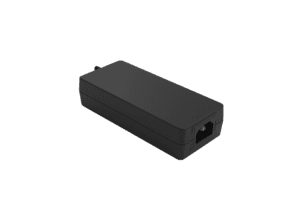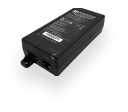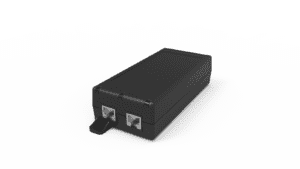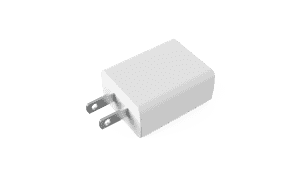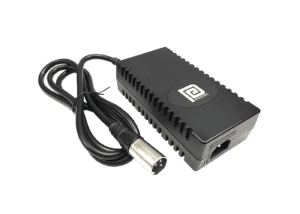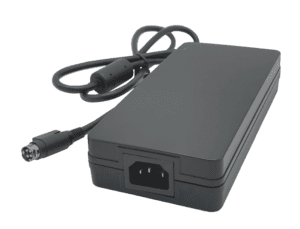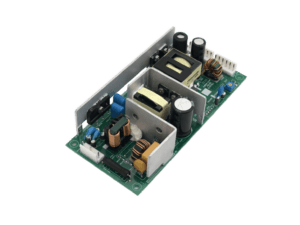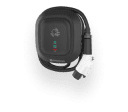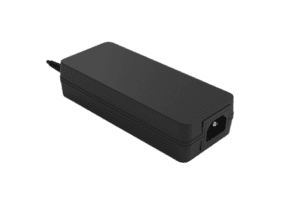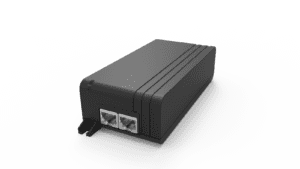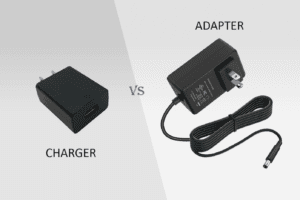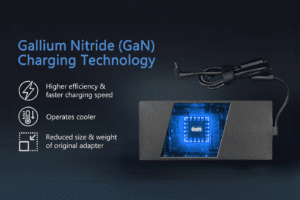BLOG
How to Redesign Robot Charging Stations for Warehouses and Outdoor Deployments
Table of contents
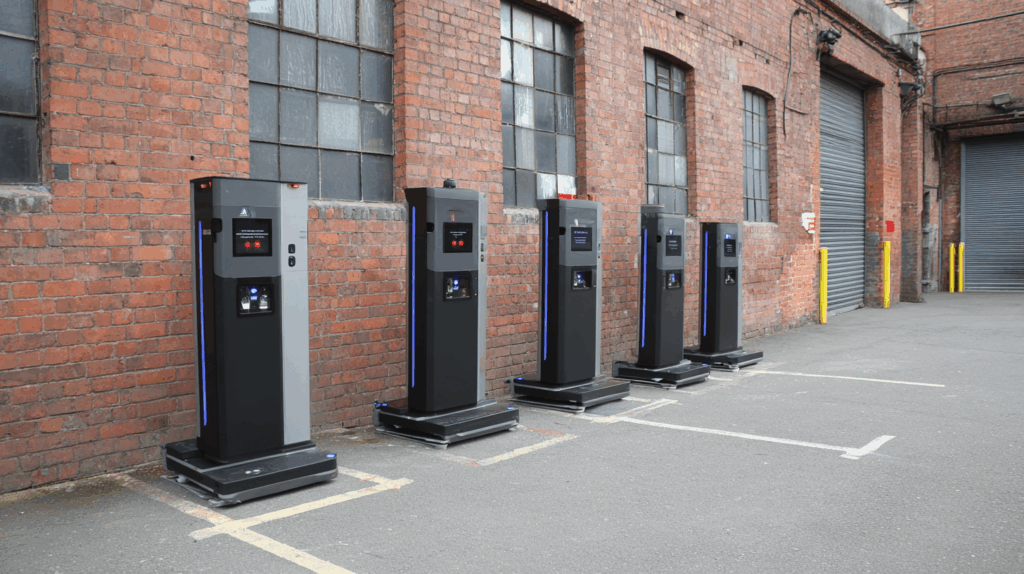
As autonomous robots become more versatile—operating both indoors and outdoors across retail, logistics, healthcare, and last-mile delivery—one piece of critical infrastructure is under pressure to evolve: the charging station. No longer confined to fixed indoor locations, charging docks now must support robots navigating from warehouse floors to curbside sidewalks—sometimes within the same shift.
This evolution is driving a new era of universal charging station design, where durability, mobility, environmental protection, and power compatibility must all converge. For OEMs, integrators, and facilities managers, this shift requires a rethink of power delivery, alignment tolerance, and environmental ruggedness.
In this article, we explore how multi-environment robots are forcing a redefinition of robotic charging station requirements, and what’s needed to create scalable, cross-environment power infrastructure that meets the demands of a new class of hybrid-use autonomous systems.
The Rise of Multi-Environment Robots and Why Charging Infrastructure Must Evolve
Next-gen mobile robots are no longer tied to a single environment. Delivery bots move from warehouse inventory zones to public sidewalks. Security robots patrol inside corporate campuses and then outdoors at night. Cleaning bots scrub indoor malls and outside plazas. This fluidity between environments exposes charging systems to far more demanding conditions.
Top Features
- Operation across temperature, humidity, dust, and terrain extremes
- Navigational handoff between indoor positioning and outdoor GPS
- Shared charging infrastructure for mixed-use fleets
- Battery demands that vary based on task location and travel distances
Top Benefits
- Increases robot fleet flexibility across diverse operational zones
- Reduces charging downtime with strategically placed universal docks
- Enhances ROI by extending robot utility beyond one environment
- Supports smart city and cross-industry deployment initiatives
Best Practices
- Map robot paths to identify indoor/outdoor transition points for dock placement
- Specify chargers with wide-temp, dustproof, and waterproof ratings
- Integrate BMS handshakes and communication protocols across platforms
- Use edge-connected docks to coordinate shared charging logic in real time
Multi-environment robots demand a new generation of charging solutions that go wherever the job leads.
Key Challenges in Designing Universal Charging Stations
Creating a truly universal robot dock means balancing competing priorities: alignment precision, environmental sealing, charging speed, and system interoperability.
Top Challenges
- Exposure to weather, debris, and foot traffic in public curbside zones
- Limited space and visibility for robots docking at shared warehouse hubs
- Need for flexible charging voltages across robot brands and models
- Dock durability under constant mechanical wear and environmental stress
Engineering Solutions
- IP67/IP68 enclosures and sealed connectors for outdoor readiness
- Flexible alignment mechanisms with vision-assisted or magnetic guidance
- Smart AC-DC/DC-DC modules that support 24V, 36V, and 48V robots
- Modular mechanical housings that can be installed in both indoor corners and curbside pads
Best Practices
- Use rubber or spring-loaded alignment ramps to reduce impact damage
- Include backup charging protocols for failed alignments or BMS timeouts
- Simulate dock performance under temperature cycles and pressure wash scenarios
- Validate compatibility with public safety regulations and ADA walkway requirements
Universal doesn’t mean average—it means versatile, rugged, and technically intelligent.
Designing for Both Indoor and Outdoor Environments: What Changes?
Environmental differences between warehouses and curbsides aren’t minor—they’re foundational to how a dock must be built, powered, and protected.
Indoor Charging Dock Considerations
- Clean, controlled conditions with consistent AC power supply
- Fast charge cycles prioritized over ruggedization
- Often located in quiet zones or marked robot bays
- Integrated into warehouse management and Wi-Fi networks
Outdoor Charging Dock Considerations
- Requires IP-rated enclosures (dust, rain, snow protection)
- Variable power availability; may require solar or DC input
- Must resist vandalism, UV exposure, and corrosion
- Operates within public view—requires visual cues and tamper protection
Best Practices
- Use a common charging logic module in different enclosures
- Design mountings for wall, ground, and pole installation flexibility
- Choose materials (e.g., powder-coated aluminum or UV-treated polycarbonate)
- Include self-cleaning or debris-resistant charging surfaces
Multi-environment charging must adapt to the harsh realities of public deployment and the efficiency needs of indoor operations.
CLIENT'S QUOTE
"Phihong’s PoE solutions have made a huge difference for us! Our network runs more efficiently, and we’ve seen real cost savings. We couldn’t be happier!"
Why OEMs Are Moving Toward Modular and Scalable Docking Systems
As robotic fleets expand and diversify, OEMs are opting for modular charging platforms that can be quickly adapted to multiple locations, robot types, and use cases.
Top Features
- Swappable power modules for different voltage and current needs
- Docking bays that support one or multiple robots simultaneously
- Communication-enabled docks with cloud or edge analytics
- Compact, portable designs for temporary or pop-up deployments
Top Benefits
- Accelerates rollout across campuses, cities, and fulfillment hubs
- Reduces engineering overhead for new robot platforms
- Makes upgrades or replacements faster and cheaper
- Enables OEMs to serve mixed fleets with one unified docking system
Best Practices
- Standardize electrical and mechanical interfaces across robot SKUs
- Embed telemetry into docks for performance tracking
- Plan for hot-swappable charging modules to adapt in the field
- Work with partners like Phihong for OEM-specific modular charging architecture
Scalability isn’t just about fleet size—it’s about supporting dynamic environments with plug-and-play hardware.
Integrating Smart Charging and Communication Protocols
Universal docks must now go beyond power—they need to communicate, log, adapt, and scale alongside the robot fleet and its management system.
Top Features
- CANBus, UART, or Ethernet interfaces for robot-BMS handshake
- Edge computing support for charging logic, data caching, and OTA updates
- Cloud integration for predictive maintenance and load management
- Visual indicators (LEDs, mobile apps, QR codes) for field diagnostics
Top Benefits
- Ensures safe, optimized charging based on battery chemistry and use history
- Reduces service calls with early warning systems for fault detection
- Enables smart fleet scheduling to avoid power congestion
- Supports over-the-air software updates and performance tracking
Best Practices
- Choose docks with modular firmware and OTA-ready hardware
- Ensure charging logs are compatible with fleet analytics platforms
- Design charging events to align with robot task transitions
- Build fail-safes for communication loss or grid instability
Today’s universal dock is not just a charger—it’s an intelligent node in your robot’s operating ecosystem.
How Phihong USA Supports Cross-Environment Robot Charging Infrastructure
Phihong USA builds smart, ruggedized, and scalable charging systems for mobile robot fleets operating across both indoor and outdoor environments. Our solutions help OEMs future-proof their infrastructure with:
- AC-DC and DC-DC modules supporting multiple voltage outputs
- IP67/IP68-rated enclosures for weatherproof deployment
- Modular smart docks for flexible integration into warehouses orcurbside zones
- CANBus/UART-compatible communication for BMS integration
- Engineering support for thermal protection, firmware control, and UL/CE compliance
Whether you’re building a delivery robot, warehouse AMR, or multi-use service bot, Phihong delivers charging infrastructure built for mobility, durability, and intelligent scale.

Contact Our Team Today!
Our dedicated sales team and international partners are prepared to support you with your latest projects and initiatives globally.
Explore More with Phihong USA
As we conclude our exploration of PoE technology, it’s evident how these innovations are streamlining power and data integration across various industries. Phihong USA stands at the forefront of this technological advancement, offering a diverse range of power solutions designed to meet the evolving needs of modern industries.
Phihong USA’s extensive product lineup includes:
- Power over Ethernet (PoE) Solutions: Delivering reliable power and data transmission over a single cable, ideal for simplifying network installations and reducing costs.
- AC/DC Adapters and Power Supplies: From compact adapters to industrial-grade power supplies, Phihong provides solutions that ensure efficiency and reliability in various applications.
- Battery Chargers: Customizable chargers for lithium-ion and lead-acid batteries, supporting a wide range of power requirements for mobility and industrial applications.
- Medical Power Supplies: Specialized power solutions designed to meet the stringent requirements of the healthcare industry, ensuring safety and reliability.
Phihong USA is committed to innovation and excellence, continually developing products that meet the highest standards of performance and reliability. Their global reach and dedication to customer support make them a trusted partner in powering the future.
Here are some useful links to explore Phihong USA’s offerings further and bring in new potential clients:
Visit Phihong USA to discover how their advanced power solutions can support your business needs. Whether you’re looking to upgrade your network, or find reliable power supplies, Phihong USA has you covered.
By choosing Phihong USA, you’re partnering with a leader in power technology, ensuring your operations run smoothly and efficiently with top-tier power solutions. Contact Us today!
FAQ
Why are OEMs redesigning charging docks for indoor and outdoor use?
As mobile robots are increasingly expected to operate across multiple environments, OEMs are shifting from environment-specific docks to universal charging solutions. These must survive the dust, water, and wear of outdoor curbsides, while also fitting into space-efficient indoor workflows. Universal docks reduce product complexity, simplify support, and increase deployment flexibility—making them essential for today’s hybrid-use robotic platforms.
What are the biggest design challenges in multi-environment robot docks?
Key challenges include:
- Environmental protection (rain, snow, heat, debris)
- Alignment tolerance across uneven or dynamic terrain
- Communication compatibility with varied robot BMS systems
- Power delivery consistency across different voltages and current loads
Designers must balance ruggedness, compactness, and intelligence, while complying with public safety and industrial standards.
Can a single dock support multiple robot models?
Yes—with the right modular power delivery system and communication logic, a universal dock can be adapted to support multiple robot types, even with varying battery voltages and physical dimensions. This is especially valuable for OEMs supporting mixed fleets or city-wide deployments. Phihong offers smart docks with programmable charging profiles and interchangeable power modules to make this possible.
Are these universal docks suitable for public deployments?
Yes—when properly designed. Public-facing charging stations must be IP-rated, vandal-resistant, visually identifiable, and secure. They must also avoid being trip hazards or ADA non-compliant. Phihong provides outdoor-ready enclosures and smart connectors that meet both safety and durability requirements for sidewalk, campus, or transit hub installations.
How does Phihong USA help with multi-environment robot dock development?
Phihong USA provides:
- Customizable charging modules for different robot voltages and formats
- Indoor and outdoor dock designs with shared charging architecture
- Communication integration with popular fleet and BMS platforms
Engineering support for UL, CE, IP67/IP68 certification
We help OEMs go from pilot to fleet deployment with charging infrastructure that works across environments, applications, and geographies.

